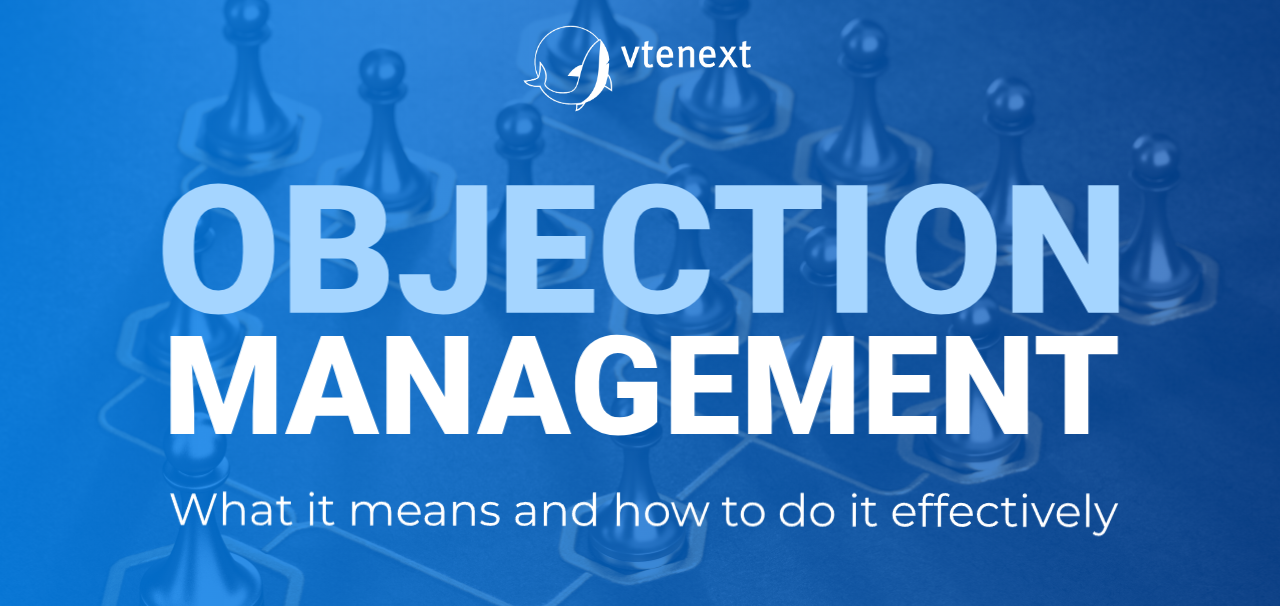Objections are natural signals of interest taking shape and should not be considered anomalies in the sales process. When they emerge, they indicate that the interlocutor is actively reflecting, questioning, really evaluating. Ignoring them means missing the opportunity to understand what really matters to the potential customer. On the contrary, dealing with them intelligently makes it possible to transform uncertainty into constructive dialogue. Objection management is a fine art that combines listening, empathy and vision, and can make the difference between an ignored proposal and a conscious purchasing decision.
What is the objection management
When a potential customer raises an objection, they are in a state of active evaluation: comparing needs, solutions, and expectations. It is a precious moment, because it reveals interest, attention, and openness. In this scenario, the objection is a channel through which authentic information emerges, often more useful than an immediate affirmative answer.
Recognising and addressing these signals consciously strengthens the relationship and tailors the proposal to the true priorities of the interlocutor. Each objection is an opportunity to create clarity, build confidence and demonstrate competence.
Steps to effectively manage objections
Addressing an objection requires method, sensitivity, and presence. While there are no universal answers, there are key steps that help maintain control of the dialogue while also empowering the interlocutor. Effective objection management is a process that develops in five interconnected phases, each of which contributes to building a stronger relationship.
Empathetic reception
The first step is to accept the objection with respect, showing empathy. This is the moment when the quality of the exchange is established: a response that recognizes the legitimacy of the concern of the interlocutor lowers defenses and opens space for a more authentic conversation. It’s not about agreeing with the objection, but about showing respect for the other person’s point of view.
Conscious listening
After receiving the objection, it’s essential to take a mindful pause. Leaving space for silence and listening without rushing allows you to catch nuances that are often missed in reactive communication. In this space, important details emerge — enriching your understanding of the context and strengthening the connection with the interlocutor.
Active clarification
The third phase is dedicated to clarifying the true meaning of the objection: reformulating what has been said, with sentences that seek confirmation, allows you to avoid misunderstandings and show a higher level of attention.
Repositioning with value
Once the objection has been clarified, it is time to offer a new perspective. The value of the proposal is highlighted through tangible benefits, unique features or solutions that directly respond to the concern. The interlocutor’s point of view is thus acknowledged, enriched, and guided toward a more complete evaluation.
Supporting the Decision
The final phase reinforces the interlocutor’s active role in the process. Providing materials, tools or support to facilitate the decision helps reduce friction and keep dialogue open. This step builds continuity, reinforcing trust and a sense of collaboration.
Types of objection and how to recognise them
Some objections stem from concrete constraints, while others arise from distorted perceptions or past experiences. To manage them effectively, it’s helpful to recognize four key sources from which they typically arise: price, timing, perceived need, and decision-making.
Objections related to price
Price-based objections reflect, in most cases, a mismatch between the perceived value of the offer and the investment required. It is not only an economic issue, but a narrative that has not yet clearly conveyed the return obtainable. When the cost seems excessive, it is often because the benefit has not been made visible or quantifiable in a convincing way.
Objections related to timing
When resistance is framed as “it’s not the right time“, the real cause often lies in a conflict between internal priorities, limited resources, or fears about the required change. Often this objection masks a need for time, organizational clarity or confidence in change. Providing a flexible or modular alternative may be more effective than any attempt to speed up the decision.
Objections related to perceived need
One of the most challenging forms of resistance arises when a genuine need isn’t recognized. In these cases, the proposal appears to be ancillary or redundant. The core of the issue is to bring out latent problems, under-appreciated inefficiencies or unexplored opportunities. It is through strategic questions and comparative data that one can broaden the field of awareness of the interlocutor.
Objections related to decision-making authority
When the interlocutor states they lack decision-making authority, it’s not just a matter of hierarchy, but also of their ability to influence the actual decision-maker. This type of objection requires a relational strategy: providing clear materials, sound arguments, and supporting materials to present the proposal internally helps turn the contact person into an ally, reducing the risk of interruptions in the process.
Strategies for responding to objections
The ability to reframe the message in a framework that aligns more closely with the interlocutor’s priorities is key to responding effectively to an objection. When resistance emerges, often the value communicated has not yet found the right connection. In these cases, the task is to reformulate the proposal, focusing on what really makes an impact: operational efficiency, cost savings, competitive advantages, or ease of adoption.
Every effective response is built on the basis of attentive listening and culminates in a connection between benefit and context. In order to generate relevance, it is crucial that the argument reflects real objectives, using concrete examples, comparable stories or verifiable data. In this way, the focus shifts from obstacles to potential.
When dialogue succeeds in creating a new perspective, the objection becomes a turning point, since that moment of doubt can become the trigger for a more conscious decision. Reframing doesn’t mean replacing a point of view, but enriching it with new elements that build confidence.

